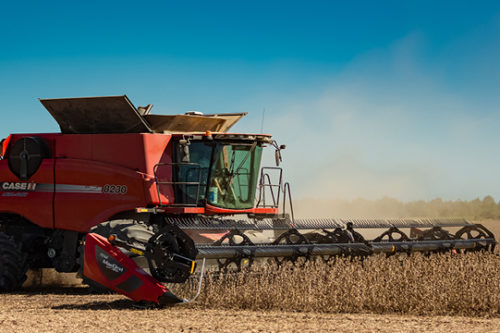What to Look for in a Timber Tract
Are you interested in investing in timber? If you don’t know much about the timber industry and want to learn more about what makes a good investment tract, we have some tips. Here are some things to look for and forestry professionals you can consult with directly.
Features of Timberland Tracts
Tract Size
A common question people in the market for timberland ask is, “How much timberland should I buy?” For beginners with finite budgets, a smaller tract may seem like an easier, less intimidating option. However, there are some hidden costs to purchasing small tracts.
Harvesting Issues: Consider purchasing a tract large enough to take at least a week to harvest — around 40 acres. When that time comes, private logging crews will travel to you at their own expense with large, heavy equipment. Less than 40 acres may not be cost-effective for them to clear, and you may have trouble finding a crew to do the work. You could end up stuck with mature trees or go over budget if you have to harvest them yourself.
Lower Bulk Pricing: When purchasing products and services for your tract, the more you buy, the lower the cost per acre. You must manage a forest in order to be successful, and you will experience cost savings the larger your tract is. You will, however, incur extra costs for site preparation, seedlings, planting, fertilizer, thinning and consulting services.
Proximity to Mills
The amount you are paid for your timber depends on a number of factors. One that you may be able to control is your tract’s distance to a sawmill. The closer you are, the better. The price you’ll fetch will be highest in an area with several competing sawmills.
Consult a Professional Certified Forester
Once you’ve found a tract you’re interested in, consider getting an expert assessment by hiring a certified forester from the Society of American Foresters (SAF). These professionals can look at a tract you’re interested in or a tract you already own. They’ll speak to you about:
- The current and future potential value of the stand
- Taxes programs, incentives and liabilities
- The health of the tract: insects, diseases, wildlife and water quality
- Risk of wildfires and the ability to mitigate them
Find certified foresters in Louisiana and Mississippi in the SAF Directory.
Join Your Local Forestry Association
Each county and parish has a forestry association that gives out valuable information about tree farms, hosts annual banquets and field days and provides scholarships. This is a great resource for anyone looking to learn about timber.
Financial and Tax Information
One of the most important aspects of a quality timber tract is that you’re able to turn a profit. Making a profit isn’t just about selling the most timber — it’s also about money management. These financial resources can help you make informed decisions about when to purchase a tract and how to structure the sale of your harvested timber.
- Texas A&M Forest Service has an online calculator that can help you determine a tract’s potential cash flow per acre.
- The U.S. Forest Service’s national timber tax specialist, Linda Wang, updates a document each year offering tax tips for forest landowners. The document explains the different ways you can structure your timber investment and how those are taxed.
- North Carolina State Extension Forestry sponsors a free webinar, “The Top Five Ways Forest Landowners Save Tax Dollars”, that teaches landowners how to decrease their federal income tax liability.
Finance Your Investment With Southern AgCredit
Southern AgCredit helps finance all types of timber operations, including young, beginning and small timber operations. We can also finance tracts that you are considering for your next investment. We offer loans and leases for milling, harvesting and hauling equipment. Learn more about our financing options by visiting Timber and Forestry loans and submitting your inquiry.












